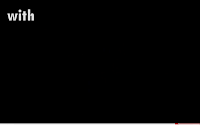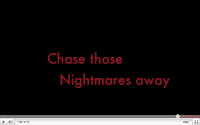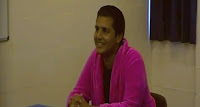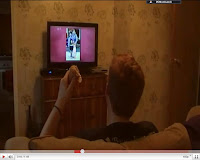Looking back at my preliminary task, what do I feel I have learnt in the progression from it to the full product?
In the preliminary task, our task was to create a short film demonstrating match-on-action, the 180 degree rule and shot-reverse-shot through someone walking through a door and a conversation between two people. I was with a different group at the time and we decided to be as imaginative as possible within the brief set and so decided on a dream storyline. This main task, however, was to create an opening for a film of a genre of our choice. Though this gave us a lot more freedom than the preliminary task as to the plot and content of our piece, it also restricted us to a specific style of film as it was important we did not create a trailer or use conventions from another genre. There was also a lot more planning into the locations of filming, characters, costume and camera angles for our final piece and this was a lot more work, often distracting us from what we had learned in the preliminary task (180 degree rule, etc).
In the preliminary task, our task was to create a short film demonstrating match-on-action, the 180 degree rule and shot-reverse-shot through someone walking through a door and a conversation between two people. I was with a different group at the time and we decided to be as imaginative as possible within the brief set and so decided on a dream storyline. This main task, however, was to create an opening for a film of a genre of our choice. Though this gave us a lot more freedom than the preliminary task as to the plot and content of our piece, it also restricted us to a specific style of film as it was important we did not create a trailer or use conventions from another genre. There was also a lot more planning into the locations of filming, characters, costume and camera angles for our final piece and this was a lot more work, often distracting us from what we had learned in the preliminary task (180 degree rule, etc).
| Preliminary Task Match on Action 1 |
 |
| Preliminary Task Match on Action 2 |
| Preliminary Task SHOT 180 degree rule |
Preliminary Task REVERSE 180 degree rule |
 |
| Preliminary Task SHOT 180 degree rule |
Our overall product for our film opening is also a lot more complex than the preliminary I created with my other group with more advanced editing techniques, such as the multiple split screens and quicker paced editing. We were also a lot more creative with our ideas, specifically with the "Wisecrack Studios" logo where we used real footage and a banner in comparison to simple, coloured text and transitions on the screen as with our preliminary task. Feedback from our preliminary task included that the storyline was not totally clear and so with our opening, we used multiple split screens and the final long shot of the boys walking together down the road in order to clarify our opening to the audience.
The logo of our institution from our comedy opening in comparison to the slogan the end of the preliminary task is a lot more creative and and humour reflects the comedy genre more than if we used plain credits:
| Being creative with our institution logo |


Learning from our preliminary task suggested made us ensure that the storyline was clear and so we used this split screen and long shot to differentiate the characters:
 |
| The Final Split Screen in our Opening |
 |
| The Final Long Shot of our Opening |
As mentioned before, the planning and research into the comedy genre, other comedy openings and preparation for filming, such as locations, costumes, props, etc, was extensive in comparison the the preliminary task but necessary. It enabled us to be prepared for filming so that we completed the opening on time and ensured that we produced an opening for a comedy film and not a trailer. The research and planning also helped with choosing the genre to start with by looking at other media texts, as well as creating ideas in regards to characters by looking at others of similar films (Superbad, 2007). The storyboard, shot list and animatic storyboard also helped us to be efficient and quick at editing and filming our piece as we knew what to film and which order to edit the footage in. Without the planning we wouldn't have been able to have the time management we did or have time left over to film extra shots that we felt were necessary to be re-filmed.
Since the preliminary task, our use of shots has improved though we did not incorporate any match-on-action or shot-reverse-shot. The steadiness of our shots has also improved so that we do not need to stabilise our footage. An example of this is the backwards tracking shot from the preliminary task and the final shot of the opening of a tilt towards the sky. Since I filmed both of these shots, I can see my improved skills I have developed over the past few months. The following shots are of where the camera's focus has been altered in order to correct the shaking camera. This is in comparison the tilt from the comedy opening in which the camera is steady and smooth.
 |
| A screen shot of the pan from the first, rough cut |
 |
| Preliminary Task |
 |
| Preliminary Task |
 |
| Preliminary Task |
 The cameras we used for our final opening were the same ones as those we used in our preliminary task, our remakes of Juno, The Strangers and Vertigo. Though they do not have high definition, they were sufficient enough to create our opening with various settings for different light conditions and focus pulls. If we filmed in high definition, it would have made our opening look more professional and like the mainstream film we set out to create. We also used the same tripods as our preliminary task and so we were fully aware how to use them the level on the side to ensure the shots were straight. However, the dolly we used in the preliminary task caused problems with shaking and wobbling when it was not on smooth surfaces. Because of the problems we faced with shaking and blurring when stabilising the shots, we decided not to use a dolly for our comedy opening. This removed the hassle of finding smooth surfaces to film on but also limited the shots we could use. To compensate, we directed the characters to move towards us and used other shots, such as pans and tilts, to create movement in our piece.
The cameras we used for our final opening were the same ones as those we used in our preliminary task, our remakes of Juno, The Strangers and Vertigo. Though they do not have high definition, they were sufficient enough to create our opening with various settings for different light conditions and focus pulls. If we filmed in high definition, it would have made our opening look more professional and like the mainstream film we set out to create. We also used the same tripods as our preliminary task and so we were fully aware how to use them the level on the side to ensure the shots were straight. However, the dolly we used in the preliminary task caused problems with shaking and wobbling when it was not on smooth surfaces. Because of the problems we faced with shaking and blurring when stabilising the shots, we decided not to use a dolly for our comedy opening. This removed the hassle of finding smooth surfaces to film on but also limited the shots we could use. To compensate, we directed the characters to move towards us and used other shots, such as pans and tilts, to create movement in our piece.  We also changed the editing software we used when creating our comedy opening in order to create a more professional product. For the preliminary task, we used iMovie - the standard editing programme available with the Mac. Since I already knew how to use this programme, it was easy to teach other group members how to use it and this saved time editing our work. However, iMovie was limited to the editing techniques and the variety of titles and positioning of them and, as a group, we also wanted a challenge. We decided to use Final Cut Express to edit our comedy opening enabling us to create more complex shots and make our film look more professional. Unfortunately, we underestimated how complicated the software was and spent several hours trying to figure out basic editing procedures and this wasted a lot of time when editing. In hindsight, I would still use this programme as I believe it helped us to create a better opening and achieve the best results.
We also changed the editing software we used when creating our comedy opening in order to create a more professional product. For the preliminary task, we used iMovie - the standard editing programme available with the Mac. Since I already knew how to use this programme, it was easy to teach other group members how to use it and this saved time editing our work. However, iMovie was limited to the editing techniques and the variety of titles and positioning of them and, as a group, we also wanted a challenge. We decided to use Final Cut Express to edit our comedy opening enabling us to create more complex shots and make our film look more professional. Unfortunately, we underestimated how complicated the software was and spent several hours trying to figure out basic editing procedures and this wasted a lot of time when editing. In hindsight, I would still use this programme as I believe it helped us to create a better opening and achieve the best results.The comedy opening fulfils the task set as it's definitely an opening and lasts nearly two minutes. As an audience, you can see this through the known conventions of an opening; the plot is not revealed; there are few, if any, fade-to-blacks and that the narrative is open. The title is also situated at the start of the film, with the correct titles and order of the comedy genre. It also conforms to the conventions of comedy, making the audience laugh or feel amused.
Since the preliminary task, I have learned exactly how the camera equipment and tripods work allowing me to save time when setting up equipment and filming. The level on the tripod also enabled us to create a better quality product than if we hadn't used a tripod, as well as the different focus and lighting settings on the camera. The past two tasks have also improved my communication and organisation skills with my group members as it was essential for us to meet the deadlines necessary so that we didn't get caught up in our work and other subjects. I have learned discipline in myself to ensure that I meet the deadlines, not just for myself but for my group members, and that pushing yourself that bit further will help you achieve the results in your film that you want.




























